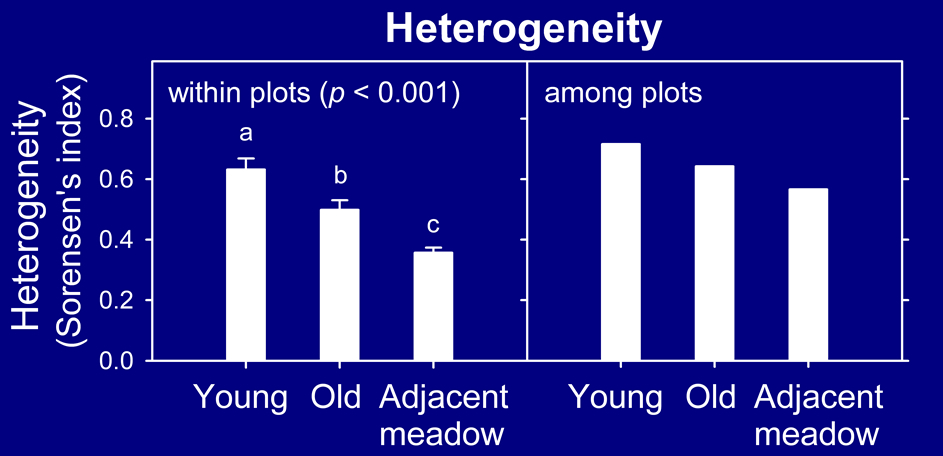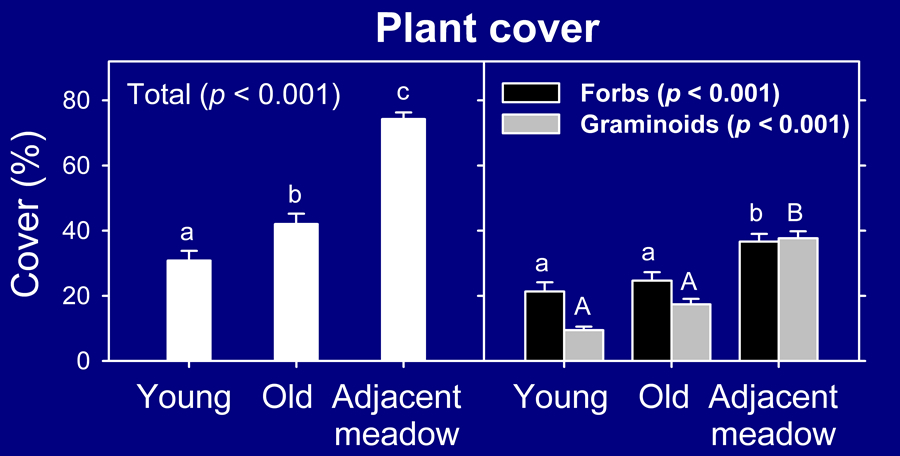| Q1.
How do plant cover and species diversity change as mounds undergo
succession?
Total
plant cover (figure, right: top panel) and species richness (figure,
right: bottom panel) increased with mound age, but old mounds had
lower cover and were less diverse than adjacent meadow.
Q2.
Does gopher activity shift the relative abundance of grasses vs. forbs?
Does this relationship change as mounds undergo succession?
Relative
to graminoids, forbs benefited from mound formation, but this advantage
declined over time (figure, right: top right panel).
Q3.
Are communities of species on mounds more heterogeneous (variable)
in composition than those in adjacent meadows? Does this variability
decline as mounds succeed to meadow? At
both spatial scales (within and among plots), heterogeneity (variability)
of species composition was greatest for young mounds and declined
with age.
 |
| Changes
in heterogeneity at two scales (within plots and among
plots), as mounds undergo succession. The p-value
for within plot data is from one-way ANOVA; letters denote
significant differences among age classes. Significance
was not tested among plots due to non-independence of
comparisons. |
|
|
 |
| Changes
in plant cover as mounds undergo succession. P-values
are from one-way ANOVA; letters denote significant differences
among age classes. |
|
 |
| Changes
in species richness at two scales (quadrats and plots),
as mounds undergo succession. P-values are from
one-way ANOVA; letters denote significant differences
among age classes. |
|
|
| Q4.
Do mounds provide germination sites for species that are absent from,
or uncommon in, undisturbed meadow?
In
total, 34 species were observed among the 74 plots. All species
were found in meadow and 28 in mound plots. The six species unique
to meadow were uncommon.
Thus,
mounds did not support “fugitive” species that were
absent from undisturbed meadow. This is surprising given the abundance
of ruderal species, typically dependent on soil disturbance, in
the soil seed bank (see seed
bank study). |
|
![]()
![]()
![]()
![]()


